#pieter lastman
Explore tagged Tumblr posts
Text






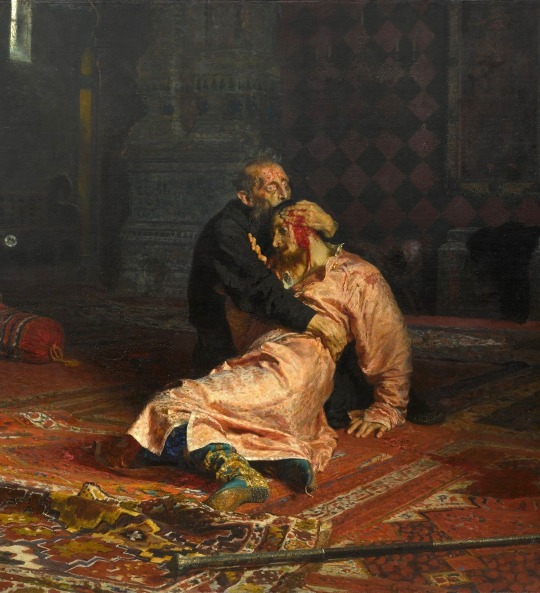
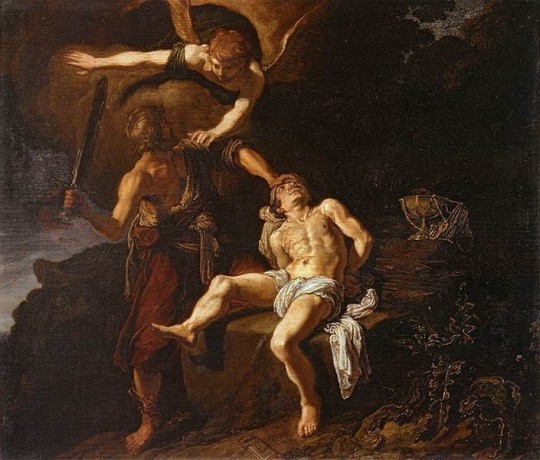






on fathers.
[no complaints, noah kahan || unkown || saturn devouring his son (1636), peter paul rubens || the sacrifice of isaac, jacob jordaens || shatter me, tahereh mafi || dead dad jokes, ollie schminkey || ivan the terrible and his son ivan on 16 november 1581, ilya repin || the angel of the lord preventing abraham from sacrificing his son isaac 1616, pieter lastman || how do we forgive our fathers?, dick lourie || I wanted to be there when my father died, sharon olds || saturn devouring his son, francisco de goya || ivan the terrible and his son ivan on friday, november 16th, 1581, shustov, nikolai semyonovich || heartburn, nora ephron || unkown]
#noah kahan#peter paul rubens#jacob jordaens#tahereh mafi#ollie schminkey#ilya repin#pieter lastman#dick lourie#sharon olds#nikolai semyonovich#nora ephron#web weaving#fathers
278 notes
·
View notes
Text

Pieter Lastman
Odysseus and Nausicaa, 1619
Alte Pinakothek, Munich
7 notes
·
View notes
Photo
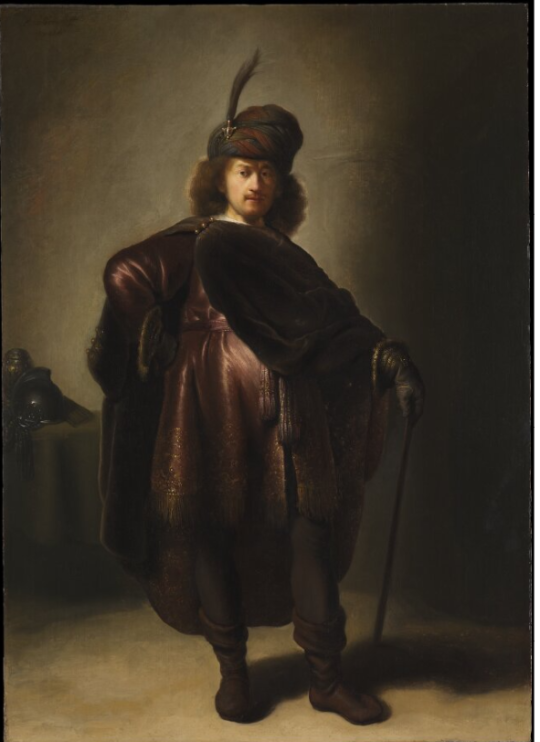

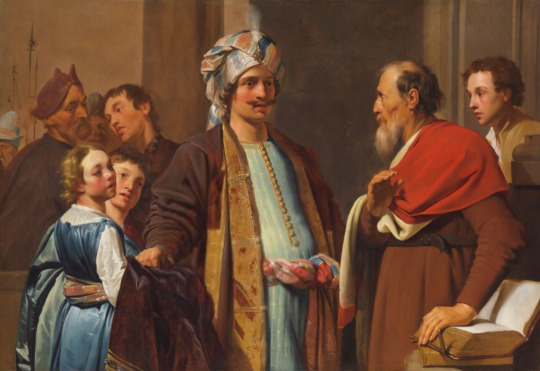
Wat? Portret van Rembrandt in oosterse kleding (ca. 1631) door Isaac de Jouderville, David overhandigt Uria de brief voor Joab (1619) door Pieter Lastman en Elisa weigert de geschenken van Naäman (1628-33) door Lambert Jacobsz.
Waar? Tentoonstelling Rembrandt en tijdgenoten - Historiestukken uit The Leiden Collection in Hermitage, Amsterdam
Wanneer? 13 maart 2023
The Leiden Collection is de particuliere kunstverzameling van het Amerikaanse miljonairsechtpaar Thomas S. Kaplan en Daphne Recanati Kaplan. De collectie bestaat uit ongeveer 250 schilderijen en tekeningen. Het accent ligt op Nederlandse schilderijen uit de zeventiende eeuw en meer in het bijzonder de Leidse fijnschilders, zoals Gerard Dou. Vandaar ook de naam: The Leiden Collection. De kunstwerken worden vaak uitgeleend. Zo hangt er op dit moment een werk van Vermeer op de grote tentoonstelling in het Rijksmuseum. Hermitage Amsterdam, een museum dat, sinds de Oekraïne-oorlog niet meer wordt gevoed door de immense collectie van de Hermitage in Sint Petersburg, toont nu historiestukken uit de collectie van het echtpaar Kaplan onder de titel Rembrandt en tijdgenoten. Het gaat om scènes uit de Bijbel, de geschiedenis of de Griekse en Romeinse mythologie. In de zeventiende eeuw werd het schilderen van historiestukken beschouwd als het hoogst haalbare.
Isaac de Jouderville was een van de vroegste leerlingen van Rembrandt. De tentoonstelling opent met een portret van zijn leermeester, een kopie naar een werk van Rembrandt zelf. Vooral de kleding is door De Jouderville zeer gedetailleerd weergegeven. De lagen van de tulband lijken daadwerkelijk over elkaar heen te liggen en de sierspeld lijkt haast echt driedimensionaal.
Pieter Lastman was in de zeventiende eeuw de belangrijkste schilder van historiestukken. Rembrandt ging dan ook vanuit Leiden een tijdlang bij Lastman in de leer. De invloed van zijn leermeester op het werk van Rembrandt is onmiskenbaar. Even onmiskenbaar is echter dat in dit geval de leerling zijn meester ver is voorbijgestreefd. Niet alleen ontbreekt het clair-obscure, waardoor Rembrandt beroemd zou worden, ook mist het schilderij een natuurlijkheid die we later in het werk van Rembrandt wel vinden. Het geheel doet nogal aan alsof het in scène is gezet. Dat neemt natuurlijk niet weg dat Lastman een capabel schilder was. Details als het tafelkleed zijn prachtig uitgewerkt.
We zien een tafereel uit het Bijbelboek 2 Samuël. Koning David ziet vanaf zijn balkon Batseba, de vrouw van Uria, een soldaat. Hij laat haar bij zich komen en slaapt met haar. De gemeenschap blijft niet zonder gevolgen: Batseba blijkt zwanger. David laat daarop Uria terugkeren uit de strijd, zodat hij bij zijn vrouw kan slapen. Op die manier zou het, wanneer het kind geboren werd, lijken of Uria de vader was van het kind. Uria weigert echter naar huis te gaan en met zijn vrouw te slapen, terwijl zijn kameraden vechten. Daarop stuurt David hem terug naar het leger en geeft hem een brief mee voor zijn aanvoerder Joab. De inhoud van de brief: “Stel Uria op waar het hevigst wordt gevochten en geef hem geen rugdekking, opdat hij wordt getroffen en sneuvelt” (2 Samuël 11:15). Joab doet wat hem wordt opgedragen en Uria komt om. Daarna trouwt David met Batseba. Lastman geeft het moment weer net voordat David Uria de brief overhandigt die zijn doodvonnis bevat.
Ook Lambert Jacobsz., een mij onbekende schilder, beeldt een Bijbelverhaal uit. Naäman, de bevelhebber van het Aramese leger, lijdt aan melaatsheid. Op aanraden van een Israëlisch slavinnetje gaat Naäman naar Israël. Hij krijgt een brief mee van zijn koning aan de koning van Israël: “Met deze brief stuur ik mijn dienaar Naäman naar u toe, om door u van zijn huidziekte te worden genezen” (2 Koningen 5:6). De koning van Israël vermoedt boos opzet: “Ben ik soms God, dat ik kan beschikken over leven en dood? Hij stuurt mij deze man om hem van zijn ziekte te genezen. Let op mijn woorden: hij is uit op een conflict met mij” (2 Koningen 5:7). Elisa hoort hiervan en roept de koning op om de zieke man naar hem toe te sturen. Als deze bij zijn huis komt, heet Elisa hem niet welkom, maar stuurt iemand naar buiten met de boodschap: “Baad u zeven maal in de Jordaan, dan zal uw huid weer gezond worden en zult u weer rein zijn.” (2 Koningen 5:10). Naäman verlaat beledigd het huis van de profeet maar doet, op aandringen van zijn dienaren, toch wat Elisa hem heeft opgedragen. Hij geneest en keert terug naar Elisa om hem geschenken aan te bieden, die de profeet weigert. Die scène geeft Lambert Jacobsz. hier weer. Hoewel hier niet een van de grootmeesters van de zeventiende-eeuwse schilderkunst aan het werk is, is het toch een fraai schilderij dat een serene rust uitstraalt.
2 notes
·
View notes
Text

Pieter Lastman, The Toilet of Bathsheba, 1619 x
1 note
·
View note
Text

"Arise, and go to Ninive the great city, and preach in it"
Jonas 1:1 Douay-Rheims Bible
"Arise, and go to Ninive the great city: and preach in it"
Jonas 3:2 Douay-Rheims Bible
Artwork: Pieter Lastman (Dutch, 1583-1633) Jonah and the Whale (1621).
#catholicism#douay rheims bible#bible quotes#book of jonas#God`s orders#Ninive#niniveh#old testament#sacred art#paintings#preaching#pieter lastman#dutch paintings
0 notes
Text

0 notes
Text

Pieter Lastman | St John the Baptist Preaching | 1627 | Mauritshuis, The Hague
"A motley crowd of people has gathered around John the Baptist, who with outstretched arms announces the coming of the Messiah. His audience hangs on his every word – one of the young boys sitting on the boulder to the left even gestures to his friends to be quiet.
Pieter Lastman specialised in history pieces like this, which depicted stories from the Bible or classical antiquity. By placing the figures in the foreground in the sunlight and the figures in the middle ground in the shade, he created a sense of depth in the tightly-packed crowd.
Today Lastman is primarily known as Rembrandt’s most influential teacher. Rembrandt studied with Lastman from 1625-1626 in order to learn the principles of history painting."
#dutch#the netherlands#amsterdam#golden age#dutch golden age#rembrandt#mauritshuis#den haag#pieter Lastman#St John the Baptist Preaching
0 notes
Text
Simple Art Posters & Canvas Prints

100+ Famous Artists of All Time
#francis davis millet#Sam Francis#Victor Vasarely#bored of directors#Cindy Sherman#Damien Hirst#Paul Cezanne#Joseph-Nicolas Robert-Fleury#Leon Cogniet#Leonard Bramer#Lionel Noel Royer#Louis Gallait#Nicolaes Cornelisz Moeyaert#Noel Halle#Paul Delaroche#Pierre Subleyras#Pieter Lastman#Than Mor
70 notes
·
View notes
Text










ahsoka + art references
ahsoka, ‘toil and trouble’ / christina’s world, andrew wyeth / ahsoka, ‘fallen jedi’ / the fallen angel, alexandre cabanel / ahsoka, ‘time to fly’ / jonah and the whale, pieter lastman / ahsoka, ‘dreams and madness’ / the fates gathering in the stars, elihu vedder / ahsoka, ‘fallen jedi’ / a matter of life and death, emeric pressburger & michael powell
151 notes
·
View notes
Text

Angel Appearing to Elijah
Artist: Ferdinand Bol (Dutch, 1616–1680)
Date: c. 1642
Medium: Oil on Canvas
Collection: The Leiden Collection, New York City, NY, United States
The Angel Appears to Elijah
The painting depicts an episode from the Old Testament (I Kings 16:29–34 and chapters 17–19). In this complex and rather gory story, Ahab, the king of Israel (reigned ca. 874–53 BC), and his wife, Jezebel, reject the God of the Israelites and build an altar for the worshippers of Baal. The prophet Elijah then challenges the priests of Baal to set up a sacrificial altar to rival his own. When only Elijah’s sacrifice is consumed by fire, the people reject the false god, Baal, and turn again to the God of the Israelites. At Elijah’s instigation, the people then seize the prophets of Baal, and Elijah kills them. After Jezebel subsequently threatens to kill Elijah, the prophet flees into the wilderness where he sits under a juniper tree and prays for death before falling asleep. The moment that Bol depicts is when an angel comes to Elijah and says: “Arise and eat.” Elijah eats and drinks, but then he falls asleep again, whereupon the angel returns and exhorts him once more to get up and eat. Thus fortified, Elijah “went in the strength of that food forty days and forty nights unto Horeb the mount of God.”
In Bol’s painting the figures loom large in the picture plane. Elijah, lying under a tree, supports his head with his right hand and rests his left arm on the ground. In his lap is the end of the belt tied around his waist, a motif often seen in portrayals of biblical figures by, among others, Pieter Lastman (1583–1633) and Rembrandt.1 Behind Elijah hangs a gourd, while leaves and flowers fill the right foreground. The approaching angel looks at Elijah with slightly raised eyebrows as he prepares to waken the prophet with his raised left hand and provide him with water from the flask hanging from his right hand. Light falling onto Elijah’s face and hands and onto the hair of the angel lends plasticity to their forms and anchors them firmly in the darkened landscape surrounding them.
#painting#oil on canvas#ferdinand bol#dutch painter#old testament#book of 1 kings#bible scripture#bible story#prophet elijah#angel#wilderness#asleep#water jug#christianity#christian art
18 notes
·
View notes
Text
Renaissance artists found Jonah and the whale to be an enticing subject.
This painting from the 1600s, attributed to Carlo Antonio Tavella, plays up the dangerous storm that God sent to sink Jonah’s boat (the whale waits patiently at the bottom left):

This 1621 painting, by Pieter Lastman, has perhaps the scariest giant fish of all. Note how Jonah looks skyward, in terror or thanks, to God as he is vomited onto the shore:

{WHF} {Ko-Fi} {Medium}
127 notes
·
View notes
Text
Thinking about Hob!Hope. Instead of being an Endless... He instead could be the incarnations of the Charities: Faith, Hope and Love (Charity)
Corinthians 13:13
“Three things will last forever--faith, hope, and love--and the greatest of these is love. ”
They are a natural antithesis to the Fates, changeable and restorative to the Fates fixed and often destructive nature. Where the Fates represent the divine order of the universe, the Charities are the greatest forces at humanities disposal to contend with it. They could match them like for like as a cosmic balance.
You could also have a lot of fun deciding how to represent Faith, Hope and Love. Do you go for younger Hob, present day Hob and then an Elder one. Or because he's essentially fixed in his mid thirties. Do you have them represented as stages of his life. Like.. (Picking at random here) 1389, 1889 and present day?

Pieter Lastman, The Three Virtues
172 notes
·
View notes
Text
"standing in the yard, dressed like a kid"

"the house is white and the lawn is dead"
inspired by Pieter Lastman's painting the Sacrifice of Isaac
#my ocs#angel pi#resonations#isaac#abigail#dr no one#tw blood#tw murder#tw blade#angel oc#seraphim oc#bible reference#intersex artist#disabled artist#lesbian artist#religious oc#supernatural fiction#religious fiction
9 notes
·
View notes
Text




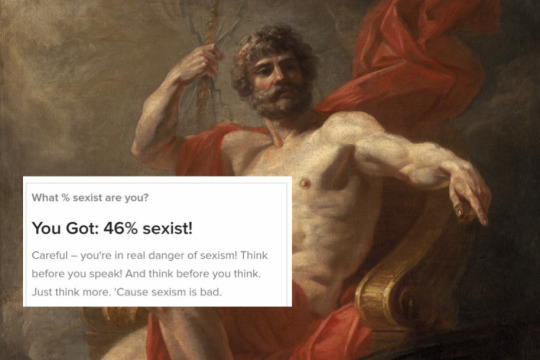




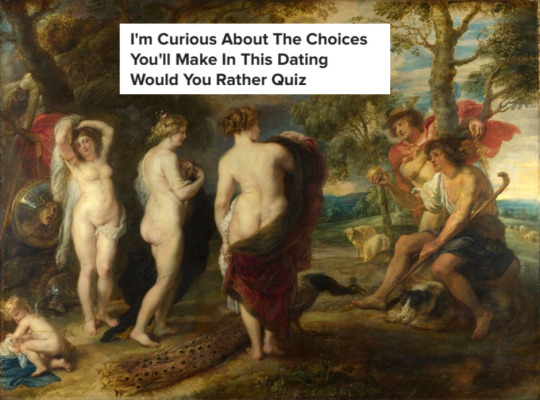
Greek mythology as buzzfeed quizzes and articles!! (this was so much fun omg)
~𝐚𝐫𝐭, (1) Aphrodite by Édourad Bisson (19th/ 20th century artist, known for depicting female beauty)- Cupid and Psyche by François Gérard. (2) Diana changing Actaeon into a deer by Boullogne Bon (17th century artist) (3) The death of Hyacinthos by Jean Broc (4) Mercury returning the cattle of admentus to Apollo, a chalk drawing by Calude Lorrain (5) Jupiter Enthroned by Heinrich Füger (18th / 19th century artist) (6) Achilles bandaging Patroklos by Sosias painter (500 BCE) (7) Juno discovering Jupiter with Io by Pieter Lastman (16th / 17th century artist) (8) Vulcanus by Pompeo Batoni (16th century) and Juno receiving the head of Argos by Jacopo Amigoni (15th / 16th century artist) (9) Jupiter and Juno by Franz Christoph Janneck (16th century artist) (10) The judgement of Paris by Peter Paul Rubens.
#greek myth#greek mythology#art#traditional art#artoftheday#fine art#history#art history#classics#the iliad#tsoa#incorrect greek gods#greek gods#lgbtq#lesbian#gay stuff#renaissance#aesthetic#art detail#hera#zeus god#artemis#mythology
32 notes
·
View notes
Text

El descenso de la cruz, 1650/1652, taller de Rembrandt (probablemente de Constantijn à Renesse (Maarssen 1626- Eindhoven 1680)), óleo sobre lienzo, en general: 142 x 110,9 cm, enmarcado: 181 x 147,3 cm. Colección Widener, National Gallery of Art.
VISIÓN GENERAL
Después de aprender los fundamentos del dibujo y la pintura en su Leiden natal, Rembrandt van Rijn fue a Amsterdam en 1624 para estudiar durante seis meses con Pieter Lastman (1583-1633), un famoso pintor de historia. Al finalizar su entrenamiento, Rembrandt regresó a Leiden. Alrededor de 1632 se mudó a Amsterdam, estableciéndose rápidamente como el artista líder de la ciudad, especializándose en pinturas de historia y retratos. Recibió muchas comisiones y atrajo a varios estudiantes que vinieron a aprender su método de pintura.
Este Descendimiento de la Cruz, probablemente pintado por un miembro talentoso del taller de Rembrandt, evoca reverencia. La luz de la antorcha sostenida por el hombre en la escalera se concentra en solo dos áreas principales de actividad: el anciano José de Arimatea, que gentilmente ayuda a bajar el cuerpo de Cristo, y la figura desmayada de la Virgen María. José parece presentar a Cristo al espectador mientras las figuras de abajo se preparan en silencio para recibir el cuerpo. El pálido rostro de María refleja el blanco mortal del cuerpo de su hijo.
Aunque Rembrandt estuvo indudablemente involucrado en la composición y bien pudo haber bloqueado formas para servir como guía de composición, no existe evidencia de su propia pincelada. El hecho de que haya sido responsable de la ejecución sigue siendo motivo de especulación. Sin embargo, se pueden encontrar suficientes conexiones estilísticas entre esta pintura y las obras atribuidas a Constantijn van Renesse (1626-1680) para hacer una atribución tentativa a este fascinante estudiante de Rembrandt. Renesse, de quien se sabe muy poco, parece haber estado con Rembrandt entre 1649 y 1652. Van Renesse describió una serie de grandes escenas bíblicas, muchas de las cuales se centraron en la vida de Cristo. Esta pintura probablemente se inició a mediados de la década de 1630 y se modificó en la década de 1650, momento en el que se redujo su tamaño.
Información e imagen de la web de la National Gallery of Art de Whansintong.
4 notes
·
View notes
